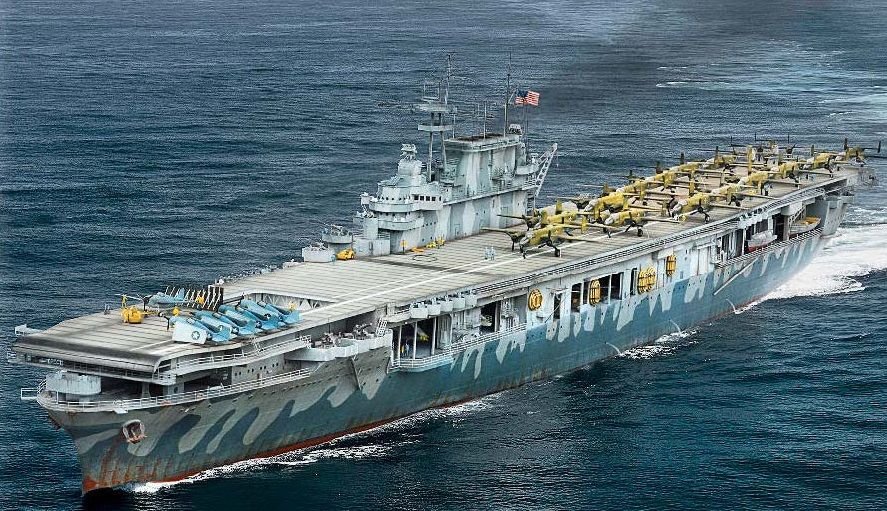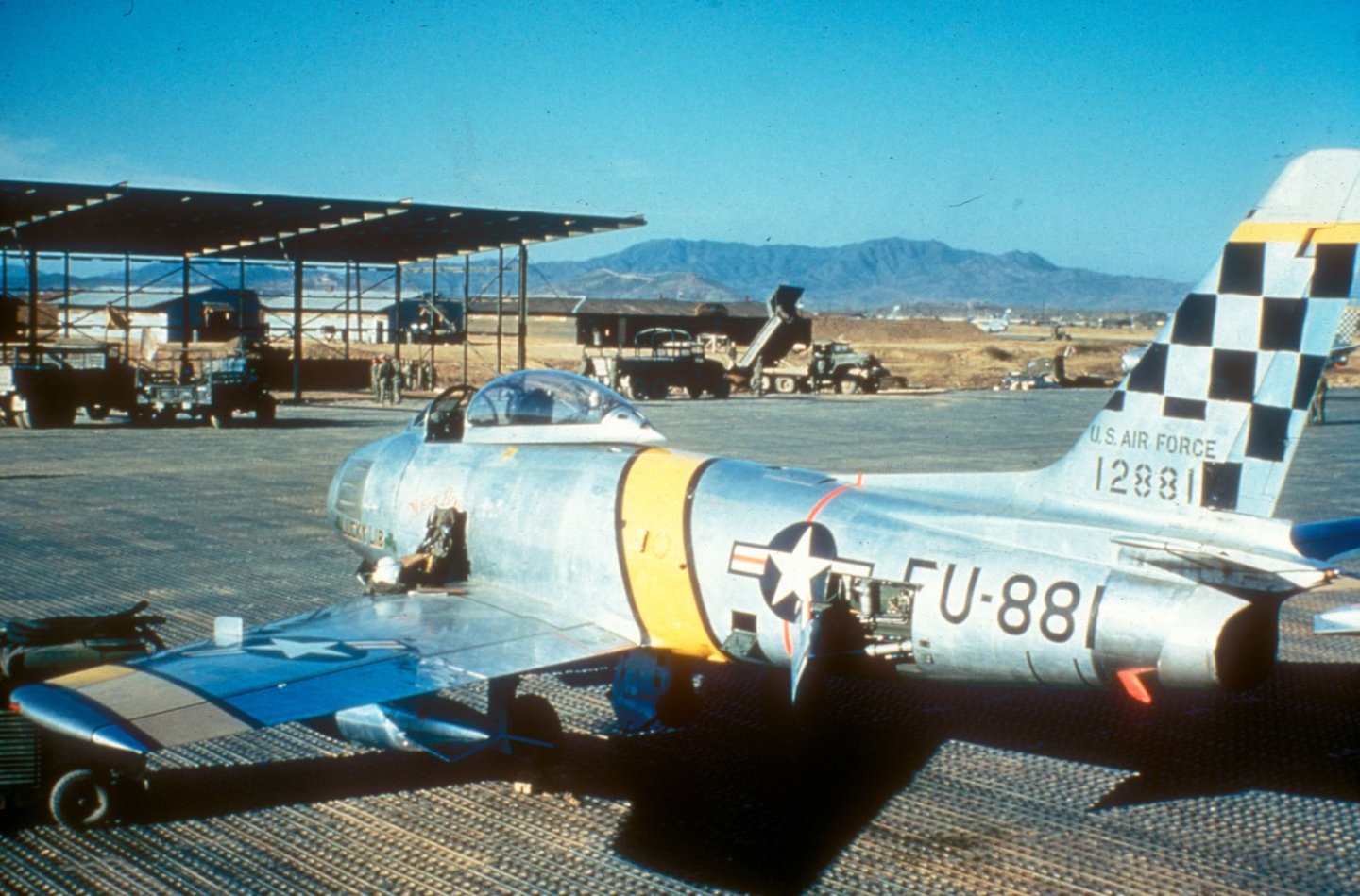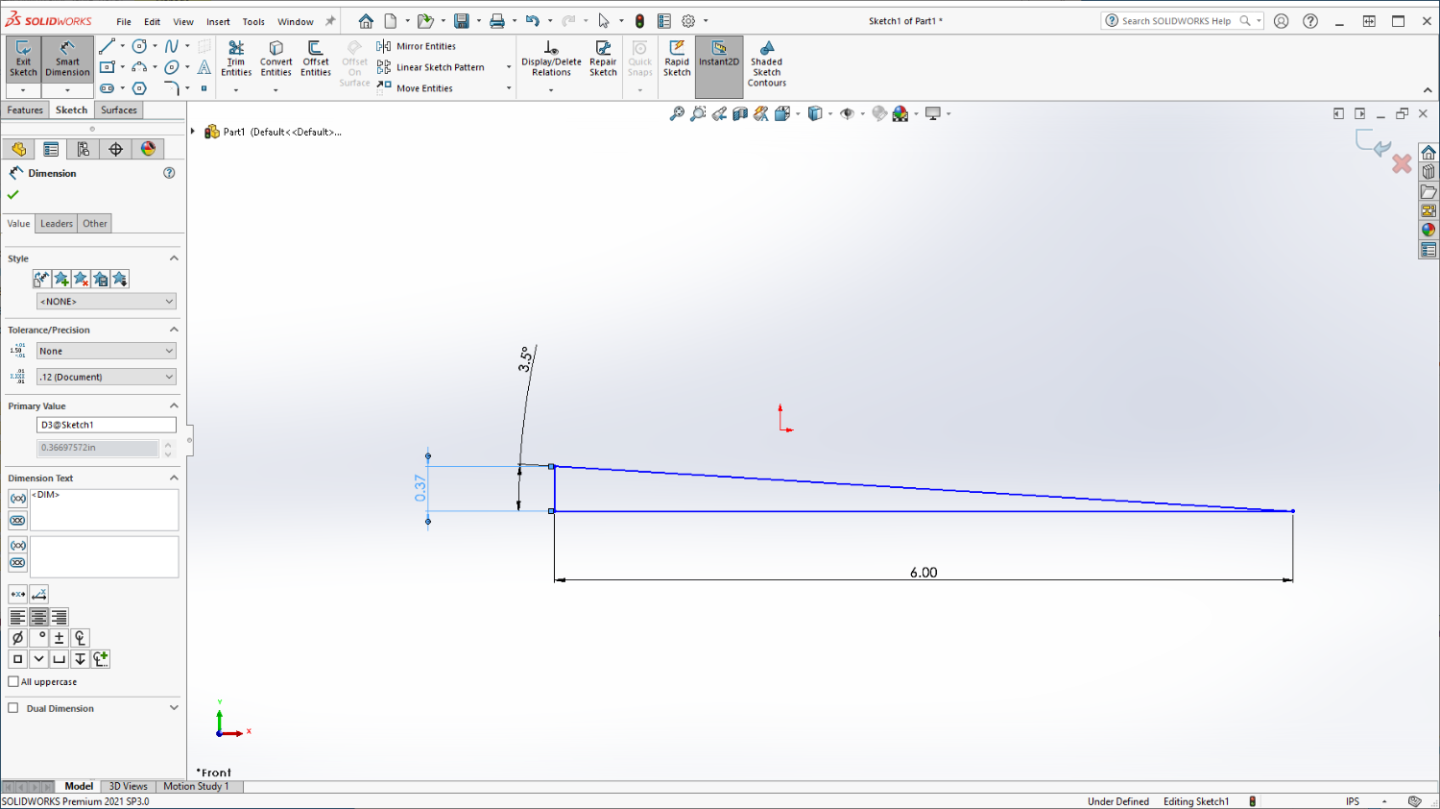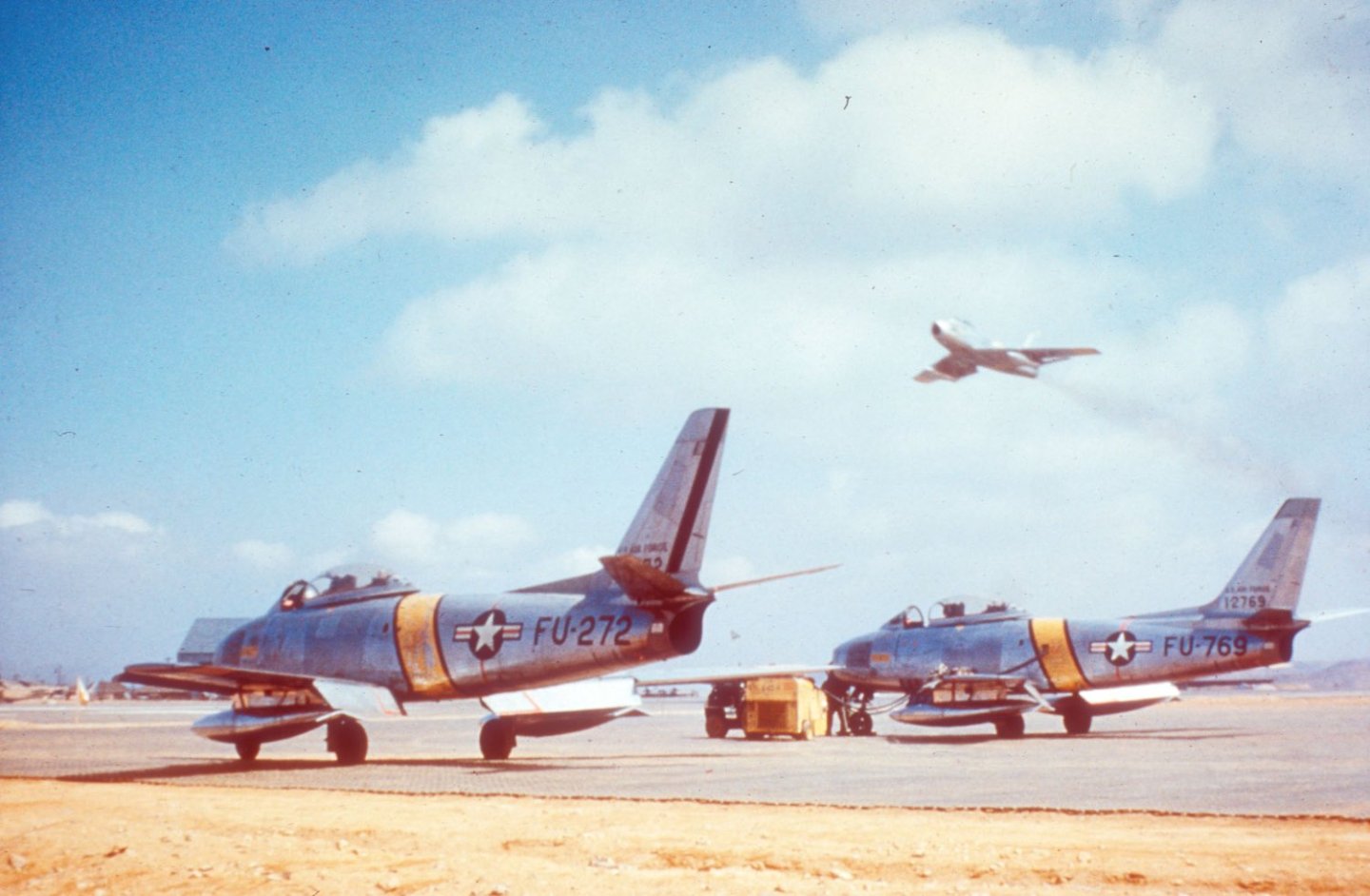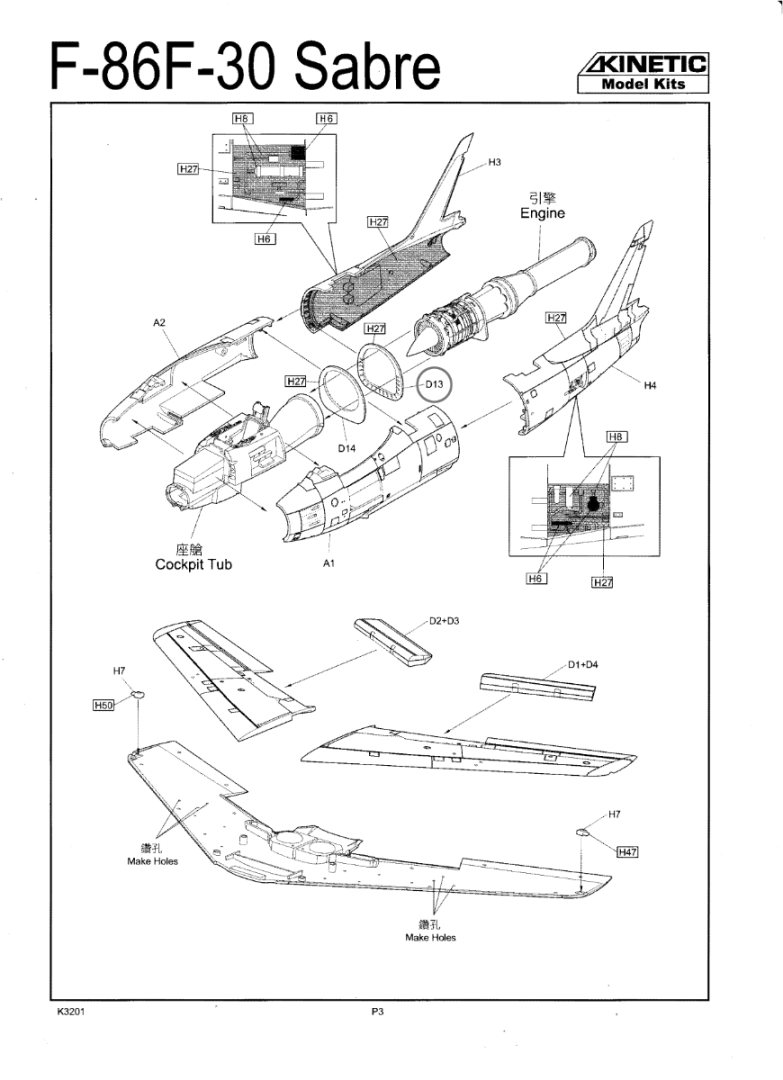-
Posts
4,373 -
Joined
-
Last visited
Content Type
Profiles
Forums
Gallery
Events
Everything posted by Egilman
-
I would go along with Mark's suggestion, the larger one will be more appropriate for the size of the ship US Destroyers and Destroyer Escorts used 14' to 18" link chain...
- 460 replies
-
- Finished
- Flower-class
-
(and 1 more)
Tagged with:
-
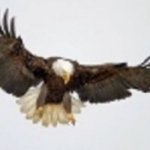
F-86F-30 Sabre by Egilman - Kinetic - 1/32nd scale
Egilman replied to Egilman's topic in Non-ship/categorised builds
And another short update... The wing roots.. The left wing root is the one that will have it's leading point cut off for the open Ammo Bay door, so the adjustment will be on right wing root... Creating the dihedral closed the gap about half way, leaving a little more than a paper thickness gap... A piece of .015 should easily fill that gap... Testing the idea.. Nice.... And it feels solid... The big question? what does it do for the left side.... The tiny gap is gone.... Excellent! now to glue it in and shave it to profile.... I love it when a plan comes together... {chuckle} And I hope I ain't boring you guys as I'm pretty sure all of you have done exactly this process before... So I'm posting it for those modelers that don't know how to do this, explaining it to someone works, pics work better... Thanks Brothers for being patient and following along.... EG -

F-86F-30 Sabre by Egilman - Kinetic - 1/32nd scale
Egilman replied to Egilman's topic in Non-ship/categorised builds
Short update, Filling the gap... well I showed you why I needed to cut off the center fuselage tail from the wing, when I heat bent the wing adding the dihedral it shrank the fuselage tail about a 1/16th of an inch... (accurately measured, not as bad as it first looked) My cut was a little off (crooked) So I straightened the gap using my knife and created a flat to glue filling strips to... .060 = 4 .015 strips I laid them in like this... Gluing each successively and using my tiny scissors I trimmed them close as each one dry... Once they were all glued and dry I test fitted the wing to make sure the joint is filled and tight... That works, a solid block of plastic once sanded smooth a skim of Mr Surfacer 1000 and I should be good to go... A lot easier than it initially looked... Onwards... Next up checking the wing root gaps.... -

F-86F-30 Sabre by Egilman - Kinetic - 1/32nd scale
Egilman replied to Egilman's topic in Non-ship/categorised builds
Thank you Alan, No problem, I'll get there sooner rather than later... I'm glad your finding my little experiments useful... It makes it worth it.... -

F-86F-30 Sabre by Egilman - Kinetic - 1/32nd scale
Egilman replied to Egilman's topic in Non-ship/categorised builds
Thank you Mark, it was a rude awakening for me, but the Oncologist seems very optimistic with the outcome... Like this is no sweat... I'm hoping I'm reading him right... Thanks Ed.... Thanks Jack. You too OC... Thank You! I have high hopes Dan, I intend to keep on keeping on... maybe a bit slower, but I'm not going to quit that's for sure... Thanks Lou, Prayers are welcome, with the big guy on my side how can I not survive this... Right now the Admiral is taking it harder than I am... such is life... I debated for three days wether I wanted to mention it or not, thought I would cause there was a few time I was a bit loopy and wanted to make sure I didn't say something stupid cause of the drugs I now have to take for the pain, they work well as long as I am consistent with them... I'm glad it's working for your family and friends, it makes it easier to believe there is a longer term outlook... I will survive this... Thanks everyone, I don't want to turn this away from it's purpose, but I thought it would be better if you all knew just in case... your support will be a great help as we get this figured out... Onwards with life, onward with the build... Update in a few... -

F-86F-30 Sabre by Egilman - Kinetic - 1/32nd scale
Egilman replied to Egilman's topic in Non-ship/categorised builds
Thanks Jav, I've broken way too many off in the past and the recurve of the fuselage into the horizontal stabilizer is a major headache... Yep, much easier to put them on last... -

F-86F-30 Sabre by Egilman - Kinetic - 1/32nd scale
Egilman replied to Egilman's topic in Non-ship/categorised builds
Thanks Brother... Exactly, it needs a stable solid fill and the only way to do that is add material... Plastic stripping is the way... Putty will shrink over time and destroy the finish.... Agreed my friend... and I remember the decal issue from your build... (and your very nice, well executed fix for it...... The decal position is from the point of the flap to the ... to the upper corner of the hydraulics service panel and about 6" behind the cabin vent.. (showing under the tail of the open canopy) the Fuel Filler Cover is centered in the yellow stripe... As far as the instructions, yep they are incorrect, so, for the markings, I will be using walkaround images for most stencil placement and historical photos for the markings... But another thing it reveals upon careful study... Many of the scribed panels on the model are incorrect as well... The major panels are good, it's the access/maintenance panels that are wrong... I'm not going to fill and rescribe, that is too much work so Ill go with the flow place the decals in as correct a position as I can and forgo black basing, they do not need to be highlighted anymore than they will be naturally..... As an aside, thanks for the reminders my friends, please keep them coming when you see one... RL is trying it's darndest to stop me but this build is kinda keeping me going... My wonderful docs gave me a difficult birthday present last weekend... The big "C" don't know where it originated from but it's there... So if I seem a bit loopy or forgetful please understand, this is a temporary situation and I will beat it eventually and we caught it early I've been told... So please bear with me as I beat this thing... The doc seems real confidant that once they identify it they can kill it... Thank you all and keep the suggestions and reminders coming, they are a big help in keeping me ontrack... -

F-86F-30 Sabre by Egilman - Kinetic - 1/32nd scale
Egilman replied to Egilman's topic in Non-ship/categorised builds
Yes that angled line is where it breaks... I'm beginning to believe that this model was designed to be shown split with the tail on it's dolly with the engine hanging out the back... The fuselage thickness from the aft half to the forward half has too many thickness variations to match up perfectly... I'm gonna have to sand away most of the surface detail to get them to match smoothly... I'm gonna try and fill as much as I can but I'm not going to destroy it's looks with too much sanding... I probably shouldn't have added the dihedral to the wings even though it would be noticeable... I think I'm gonna tack the Gear Covers ,Canopy & Speed Brakes in place with canopy glue to do the finish... There are only two places that need a darker sheen to the surface, the two gun panels of course and one that lines the tail under the horizontal stabilizers, the rest is aluminum... Maybe I'm being too critical.... Filling and sanding up next.... The gaps in the wing roots are small and at this distance aren't that noticeable, even up close they can hardly be seen... Still debating on flaps down or up, Speed Brakes open or closed.... I haven't found a image I like yet... Anyway, this is where she sits right now.... Onwards... -

F-86F-30 Sabre by Egilman - Kinetic - 1/32nd scale
Egilman replied to Egilman's topic in Non-ship/categorised builds
Update... The plastic shrinkage issue.... I cut off the fuselage tail from the lower wing section, a pretty straightforward cut across the fuselage just aft of the landing gear bays.... To illustrate the shrinkage issue, I fitted the wing and the fuselage section into the positions they will take when glued together... See the gap? That is how much the plastic shrank with only about 5 minutes light heat... That gap is almost an 1/8th inch... I already checked the wingspan to see if that changed and no it didn't... (thank god) Sometimes we get lucky... This is a formulation of styrene I've not encountered before... Most styrene will just sag and melt in heat, this styrene shrinks before it sags... Fortunately, this is easily fixable, I think I just dodged a bullet... {chuckle} Sometimes we just don't know what we are dealing with....... -

F-86F-30 Sabre by Egilman - Kinetic - 1/32nd scale
Egilman replied to Egilman's topic in Non-ship/categorised builds
Thanks brother, it's an easy fix but one must be careful with the heat... The tailplanes are fine, they are a simple pin connection into the hole and they have the proper angle already will be using Gators Grip to install them as given the tricky nature of the plastic I don't want to take a chance that the glue will weaken the pin allowing them to sag... This plastic is interesting... it will shrink before it will sag if too much heat is applied, I'm going to have to cut the rear fuselage tail off the wing section ahead of the landing gear bays and reinstall it and fill the gap afterwards. It did warp a bit during the cooling after applying the heat.... I was expecting it so it's not a big deal, and will show pics when I've figured out exactly how to do it... The wing root gap is still going to require some strip filling to close it up completely but it is a lot closer now than it was... I'm just glad I didn't destroy the wing doing this, it was a bit of a gamble given the strange way this plastic responds to gluing and heating... Almost PVC like.... As I get into it, it's becoming a little bit more involved than the instructions let on... I mean you can build a decent looking model straight out of the box, even adding aftermarket, but correcting some of the (rather minor) issues is getting technically complex... Nothing I haven't done before.... (and it's helping to keep my mind off some RL issues that are a pretty heavy weight now) Onwards... -

F-86F-30 Sabre by Egilman - Kinetic - 1/32nd scale
Egilman replied to Egilman's topic in Non-ship/categorised builds
Thanks Mike, I have several of their products I use frequently Mr Surfacer 500 & 1000 to be exact... Great products for what they are intended for... (filling spaces where sanding is undesirable) and I agree, use in a well ventilated area... CMK's parts are pretty good getting up there with Eduard in quality and their casting is the equal of Eduard... I'm sure as time wears on their instructions will improve which is an area that all the aftermarket companies could improve upon... One of the most fun parts of this hobby is learning and engineering the changes to make the model more than just a generic representation of the object... Kinda bring the basic object to life, (and more accurate to boot) It's why I like this hobby so much.... (as we all do brother) -

F-86F-30 Sabre by Egilman - Kinetic - 1/32nd scale
Egilman replied to Egilman's topic in Non-ship/categorised builds
Ok Brothers, another update.... Plastic bending... The wing on this kit was molded flat... Unfortunately the real aircraft has a 3.5 degree dihedral to it... Dihedral is upsweep, the wing tips are higher than the wing root... And on the F-86 it was barely noticeable but it is there... So how do we go about making the wing tips higher than the roots without warping the wing? Heat gun... But first we have to figure out how much to bend the wing at the root for a 3.5 degree upsweep... The length of the wing in scale is 6 inches from root to tip... To figure out how much lift we need we turn to solidworks... This consists of drawing a horizontal line 6" long and a corresponding line at an angle to that line... Then we measure the angle between the lines and set it to 3.5 degrees... Then you draw a vertical line joining the open end of the two lines and measure it... in this case 3/8th of an inch is how much we need to raise the wing tips.... So how do we go about this in real life? Working upside down, you use a 3/8th piece of wood just wide enough to support the wing roots on the center and place a block on the center to hold them flat... You then place a couple of pieces of light wood on the wing tips to increase their weight a bit to let gravity work in our favor... WE then take a standard painters heat gun on it's mildest setting and gently apply heat along the wing root on the bottom side watching carefully as the wing tips settle to the bench surface... Remove the heat frequently cause you do not want to overheat the plastic.. (which can happen awful fast) when the wing settles to the surface remove the heat and allow to cool, then do the same to the opposite wing, allowing it to completely cool when it has settled... At this point you remove the blocks at the wing tips and check if the tips are still settled on the bench surface, if not another slight application of gentle heat to the wing not touching and allow it to cool completely... (takes about 10 minutes) At this point you have added dihedral to your wing.... Maintaining the straightness of the wing itself.... without damaging any details on the wing surface... Next up, assembling and fitting the wing to the fuselage.... (sometimes this process will warp the rear center section of the wing a little bit, you will need to adjust the fit) This is the old school process of adjusting a wing... More later... Onwards... -

F-86F-30 Sabre by Egilman - Kinetic - 1/32nd scale
Egilman replied to Egilman's topic in Non-ship/categorised builds
Thanks Dennis... Proceeding slowly, making sure I hopefully get it right... Main assembly of the fuselage is complete, awaiting it's final cure... Next was the control surfaces, Flaps and Rudder.... I went ahead and checked my source pics and came up with this one... late '52 or so Suwon, Korea.... Two F-86's sitting alert off the end of the runway... They are F-86E's instead of F-86F's but the period is correct... Notice the Flaps are down and the Speed Brakes closed.... So sitting in their revetment the flaps were closed but sitting alert could be open or closed for either control surface... Now I have a debate going on in my mind, which way I want to make it? Anyway, just finished gluing up the wing.... Once it is cured I'm going to have to heat bend the dihedral into the wing... 3.5 degrees, the kit molded them perfectly flat.... Making progress my friends... Thanks for the likes and following along... EG -

F-86F-30 Sabre by Egilman - Kinetic - 1/32nd scale
Egilman replied to Egilman's topic in Non-ship/categorised builds
I could see where that might work better, The Dental Repair powder is a water mix resin and cures indescribably hard.. But yet is still sandable and carveable... And it's wipeable smooth as long as it hasn't fully cured.... Well worth a try... -

F-86F-30 Sabre by Egilman - Kinetic - 1/32nd scale
Egilman replied to Egilman's topic in Non-ship/categorised builds
And another update... I've found that the plastic this kit is molded in is a bit soft, not really a big issue with building... But the plastic formulation does react a bit differently from regular polystyrene... Usually when I'm gluing plastic from most kits or Evergreen stock with Testors brand MEK glue, the joint is cured within ten minutes of application, the plastic this kit has been molded in takes about 4 hours to cure sufficiently to hold and overnight to completely cure... I found this out during the fuselage assembly portion... There is a part... D-13 on the drawing, (circled above) that is too big, 1/16th inch too big... When installed, it spreads the upper joint of the rear fuselage half wide open...... The fix is simple, cut the part down so it fits properly without spreading the joint... The initial installation exposed the glue/plastic problem by pushing the joint out... Thankfully there is an insert panel that creates a break in the joint and stops the spread before it ruins the entire upper joint... The fix is to cut a 1/16th inch section out of the part at the top to either side of the joint and snap it back in place so it doesn't put any pressure on the joint itself... When snapped into place it becomes a trapped part that doesn't require any glue at all... But I'm still going to glue it cause it will act to hold the fuselage separation joint together as a reinforcement maintaining it's shape.... As you can see below, makes for a much tighter and smoother joint.... This is a beautiful kit, but it does have some idiosyncrasies unique to it... Anyway, Onwards... -

F-86F-30 Sabre by Egilman - Kinetic - 1/32nd scale
Egilman replied to Egilman's topic in Non-ship/categorised builds
Thanks Dan... Yep I've tried it, but usually I let it harden too much before I'm finished sanding, it's an option I've used in the past but only for certain situations, usually for flat open seams... It does have the advantage of making very hard fills and joins but in my experience it's not so good with complex joints or sharp corners... The other issue is that it doesn't harden at the same speed, some CA's are faster than others, even from the same brand... And part of it is preference, simple Testors Putty (grey tube) dries slow enough that you can work it for a few minutes before it begins to harden and if you make a mistake you can easily remove it before it completely cures, the down side is it is an overnight cure.... 12-24hrs for a completely hard cure, but that is also a benefit, it gives you a natural pause in the build sequence... It's another tool in the box for those situations that would benefit from it... But not a general use tool.... -

F-86F-30 Sabre by Egilman - Kinetic - 1/32nd scale
Egilman replied to Egilman's topic in Non-ship/categorised builds
Thank you my friends, old school the only way I know how to do it... (I would be lost without my microsaw) It's now time to glue it all together into one fuselage, and then prime and final smooth the joints to finish it off... Then the wings get glued together as well. from here on it should be a fairly straightforward build... The only issue I've got to figure out is the wing join gaps, probably some filler strips, the angle is slightly less than 90 degrees in a sharp corner so the joint has to be tight... I also have to cut off the left wing gusset, when the ammo bay door was open the wing root leading edge was removed and usually hung off a cable but was occasionally placed on the wing upper surface... I still have to figure out where to cut it.... I'm going to present her in alert mode, sitting on the apron in rapid reaction state ready to fly, just pull the engine covers, fire up the engine and go... So the assembly will take her to an almost finished state as everything except the left side Ammo Bay Door and Speed Brakes will be closed up.... Even the Flaps will be at 0 degrees... (very rarely were they anything but when on the ground) And of course, everything gets silvered.... So this should move along fairly quickly until it's time for Rub-n-Buff & decaling/stenciling, (there are a million of them) Landing Gear & Canopy will be the last parts done.... At that point I will probably revisit the engine and see if I can't improve the cart... Again Thank You for the complements, it is sincerely appreciated.... -
Very Very nice, and a completed GPM kit to boot! I've watched a lot of people start one of these kits and eventually bin it over the years... (me included) Completing it is an accomplishment itself.... Beautiful job my friend, very impressive... Gonna try a Halinsky next? I heard the Thunderbolt was a particularly interesting build (the engine alone I believe has over 100 parts, it includes a lot of choice words in it's workflow as well) {chuckle} But they are a lot more accurate in their appearance... You are definately a card master....
-

F-86F-30 Sabre by Egilman - Kinetic - 1/32nd scale
Egilman replied to Egilman's topic in Non-ship/categorised builds
Another small update my friends... And another excursion with the micro saw.... The object here is to thin the back wall without breaking thru to the gear bay.... Far enough into the wall to clear the Ammo Bay insert.... Initial cut went like this.... That took off about 2/3rds of the thickness... Next is to remove the remaining corner from the intake planum.... Essentially a #2 straight blade run into the wall along the curve of the plenum, then a short straight cut along the machine gun bay... Once done, use a chisel blade to remove the triangular part along the plenum... And yes, that red splash on the side of the machine gun bay is my physical contribution to the build, courtesy of the #2 straight blade.... As the admiral would say, it is now officially mine.... {chuckle} Done... I will have to do a bit of filling along the joints when all is said and done... But it now ready for assembly..... More later.... EG -

F-86F-30 Sabre by Egilman - Kinetic - 1/32nd scale
Egilman replied to Egilman's topic in Non-ship/categorised builds
I've read that it is a wipe on wipe off type of stuff, only for filling gaps... Sandable smoothing fills take place after it is cured for at least a day... I don't know, others may have a better understanding of it, all I know is I haven't found an application yet where it works like we understand normal putties do... And it has come off everything I've ever put it on...
About us
Modelshipworld - Advancing Ship Modeling through Research
SSL Secured
Your security is important for us so this Website is SSL-Secured
NRG Mailing Address
Nautical Research Guild
237 South Lincoln Street
Westmont IL, 60559-1917
Model Ship World ® and the MSW logo are Registered Trademarks, and belong to the Nautical Research Guild (United States Patent and Trademark Office: No. 6,929,264 & No. 6,929,274, registered Dec. 20, 2022)
Helpful Links
About the NRG
If you enjoy building ship models that are historically accurate as well as beautiful, then The Nautical Research Guild (NRG) is just right for you.
The Guild is a non-profit educational organization whose mission is to “Advance Ship Modeling Through Research”. We provide support to our members in their efforts to raise the quality of their model ships.
The Nautical Research Guild has published our world-renowned quarterly magazine, The Nautical Research Journal, since 1955. The pages of the Journal are full of articles by accomplished ship modelers who show you how they create those exquisite details on their models, and by maritime historians who show you the correct details to build. The Journal is available in both print and digital editions. Go to the NRG web site (www.thenrg.org) to download a complimentary digital copy of the Journal. The NRG also publishes plan sets, books and compilations of back issues of the Journal and the former Ships in Scale and Model Ship Builder magazines.

